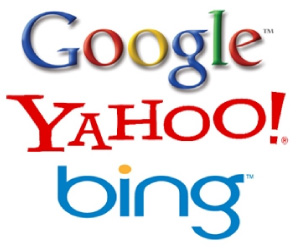Amid all the loud noise emanating from digital advertising about technology, rebates, viewability and transparency, it can be easy to forget a very simple truth. Half of all UK digital advertising goes on search, according to the IAB UK. It only gets the occasional headline, but it is actually the biggest channel.
So it was interesting to see Warc suggest this morning that search is going from strength to strength, often at the cost of display formats.
The overall macro figure is startling. Search’s share of global advertising spend has trebled over the past decade, and, this year it is expected to reach 22% in the US, 26% in China and 30% in the UK. Forget the world “digital” for a moment. That means that nearly one in three advertising pounds spend in the UK this year will go to paid search.
As an extra insight, globally, mobile averages out at just under two-thirds of search budgets. This represents a doubling, globally, since 2015 alone. So, to do a little number crunching, if 30% of all advertising budgets go to search, that means nearly 20% of every pound spent on advertising in the UK is headed the way of mobile search. Pretty impressive.
Obviously, Google stands to be the main beneficiary, because — although its global dominance accounts for around two-thirds of the search market — in the UK it’s pretty much the only game in town, accounting for more than four-fifths of the market.
Warc is pretty clear about where this growth is coming from — display. Search is eating into display budget, its researchers claim — and image search and voice search are continuing this trend.
interestingly, its global average figures suggest that the search click-through rate is around 3.3% — just over six times better than display, and at just over 4%, conversion rates are four times higher for search than display. However, cost per click is also around four times higher with search campaigns compared to display.
It’s an interesting way of looking at the market. Conversions are click-throughs are much better on search than display, but at the same time, the cost goes up too.
if this tells us one thing about global marketers, right now, I’d suggest it shows that they are looking to back more of what gamblers would call a “sure thing.” Yes, the cost of search is high, particularly for lucrative keyword terms — but then so too is response because, by the nature of the channel, people have usually shown they are potentially in-market for a product or service.
Digital marketers are obviously taking out their calculators and making the decision that the higher cost is worth it because it leads to improved results. Plus, with search marketing, you know you have been seen because you are only paying for click-throughs. Sure, it’s not perfect — but it has to be a lot more reliable than hoping ad units are seen rather than hidden away below the fold.
So, search is going nowhere. It may be the old stalwart and it may not be what trendy execs discuss at major conferences, but it’s the biggest digital channel there is and, if you listen to Warc, it’s growing globally and that growth is coming at the expense of display.
- by Sean Hargrave , Staff Writer, May 31, 2018

